Author: Marshall Schott
Seemingly due to its dark color, luscious foam, and typically somewhat creamy mouthfeel, Irish Stout has a reputation for being too heavy, a meal in a glass, overly rich and filling for some. All of this despite the fact Irish Stout is actually one of the driest and least filling beer styles out there, usually clocking in around 4.0% ABV.
The history of Stout is as rich as the style is delicious, stretching back to the early 19th century with the advent of the roasting kiln by Daniel Wheeler. Originally a term used to denote Porter of higher strength, darker color, and more intense roast character, Stout eventually became its own style whose popularity was largely spurred by Dublin, Ireland’s Guinness Brewery.
In the nearly 2 centuries since Irish Stout was purportedly introduced to the beer scene, the style has naturally evolved to the its at today. The BJCP provides the following description of Irish Stout:
A black beer with a pronounced roasted flavor, often similar to coffee. The balance can range from fairly even to quite bitter, with the more balanced versions having a little malty sweetness and the bitter versions being quite dry. Draught versions typically are creamy from a nitro pour, but bottled versions will not have this dispense derived character. The roasted flavor can be dry and coffee-like to somewhat chocolaty.
I’ve been a fan of Irish Stout since I met my first pint of Guinness and I’ve brewed a fair number of batches myself, the balance of dry yet creamy roast flavors serving as a nice counter to the crisp Pilsner and hoppy Pale Ale I often have on tap. While brewing Irish Stout demands nothing particularly special, given its generally lower OG, many view it as a great style for the parti-gyle method. Having never used this method myself, it seemed ideal for this Short & Shoddy brew!
| BREWING THE BEER |
As much as I enjoy a good Irish Stout, I admittedly selected the style due primarily to my interest in using the spent grain from a no sparge BIAB batch to make a vastly different beer.
Short & Shoddy Irish Stout
Recipe Details
| Batch Size | Boil Time | IBU | SRM | Est. OG | Est. FG | ABV |
|---|---|---|---|---|---|---|
| 5.5 gal | 20 min | 27.9 IBUs | 25.6 SRM | 1.024 | 1.005 | 2.4 % |
| Actuals | 1.024 | 1.007 | 2.2 % | |||
Fermentables
| Name | Amount | % |
|---|---|---|
| Pale Ale Malt (Muntons) | 12 lbs | 67.61 |
| Munich Malt (Muntons) | 2 lbs | 11.27 |
| Oats, Flaked | 2 lbs | 11.27 |
| Roasted Barley | 1 lbs | 5.63 |
| Honey Malt | 12 oz | 4.23 |
Hops
| Name | Amount | Time | Use | Form | Alpha % |
|---|---|---|---|---|---|
| Perle | 35 g | 20 min | First Wort | Pellet | 8.3 |
Notes
| Water Profile: Unfiltered NE Fresno Water w/ some CaCl |
Download
| Download this recipe's BeerXML file |
This brew day began with the brewing of a Short & Shoddy American IPA that ended up being rather tasty. During its brief mash rest, I collected the unfiltered water based on what BeerSmith suggested for the pre-boil volume– since the grain would already be saturated from the first mash, I didn’t account for absorption.
Since this was a Stout, I measured out an objectively perfect amount of calcium chloride and tossed it in the water. That was it, no other minerals or pH adjustment.
I used my heat stick to warm the water during the 20 minute IPA mash.

To make the pale-ish wort that I hoped to extract from the spent grains more Stout-y, I added some Roasted Barley (EHHH?) and some flaked barl… shit, I don’t have any flaked barley… umm, flaked oats.
When the short IPA mash was finished, I suspended the grain bag over the kettle and allowed it drip for a minute.
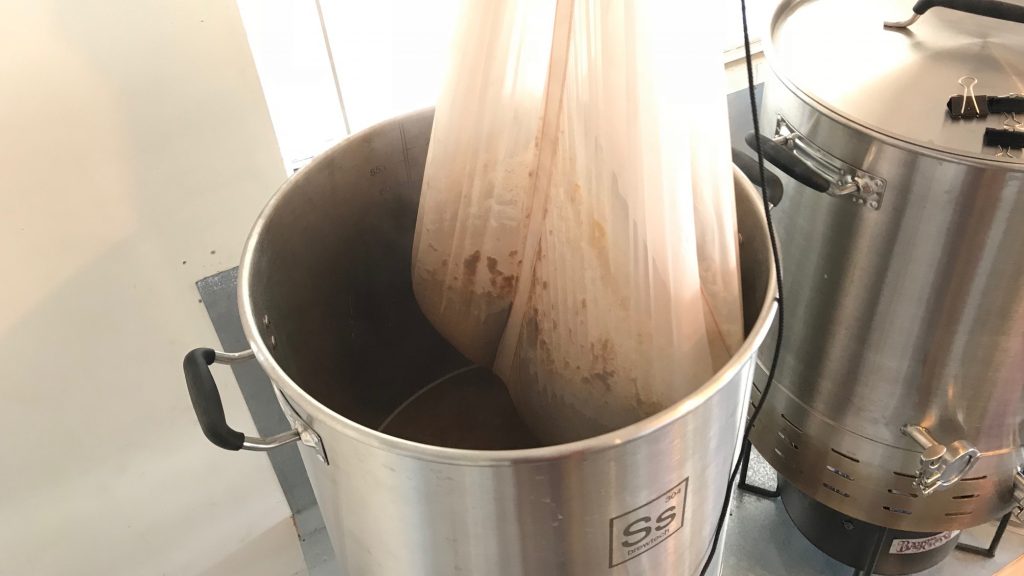
I checked the Irish Stout liquor to find it hadn’t quite reached typical sparge temperature.
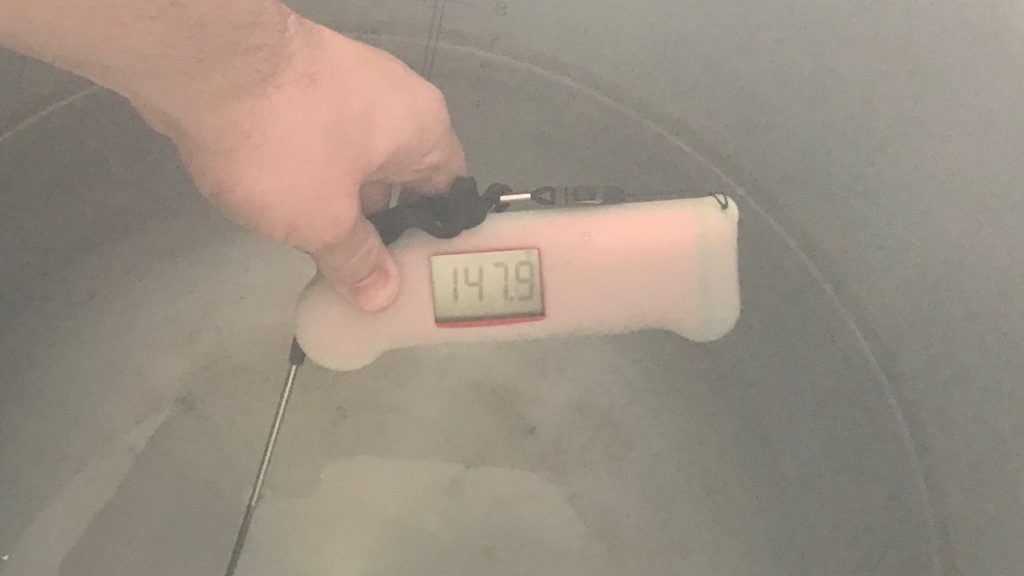
Meh. I swung the filled bag over and plopped it into the sorta warm water, sprinkling in the oats and roasted grain while stirring.
With the starch having been converted in all but the roasted grains, I figured it wasn’t necessary to steep for too long… but I also had friends over, so I ended up removing the grain bag one-glass-of-hard berry cider later, I’m guessing 4 minutes. After giving a good squeeze, I boiled the wort for 20 minutes with hops added as stated in the recipe then quickly chilled it to 72°F/22°C.
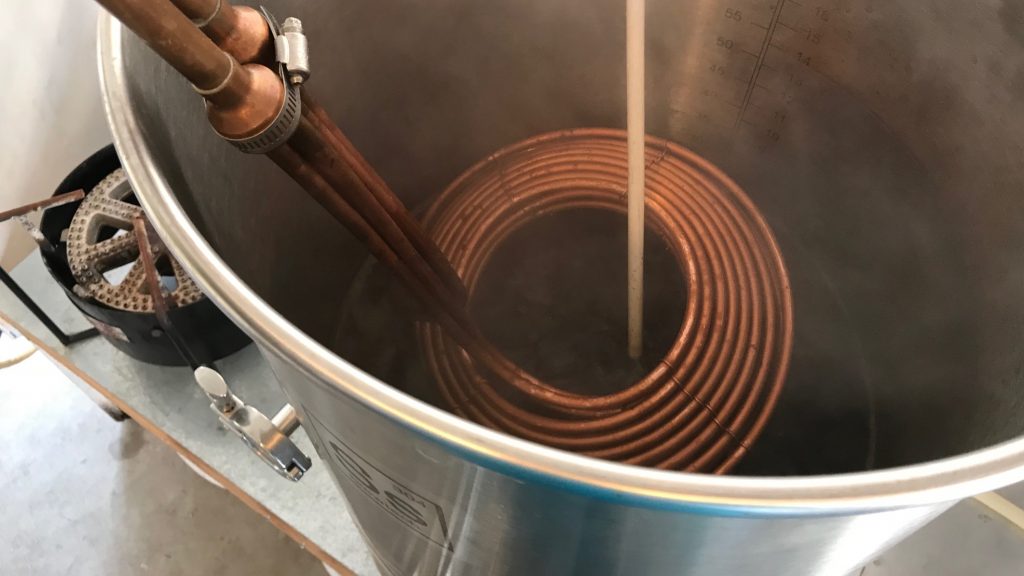
A refractometer reading revealed the OG to be tad lower than expected for the style, but nothing that worried me too much.
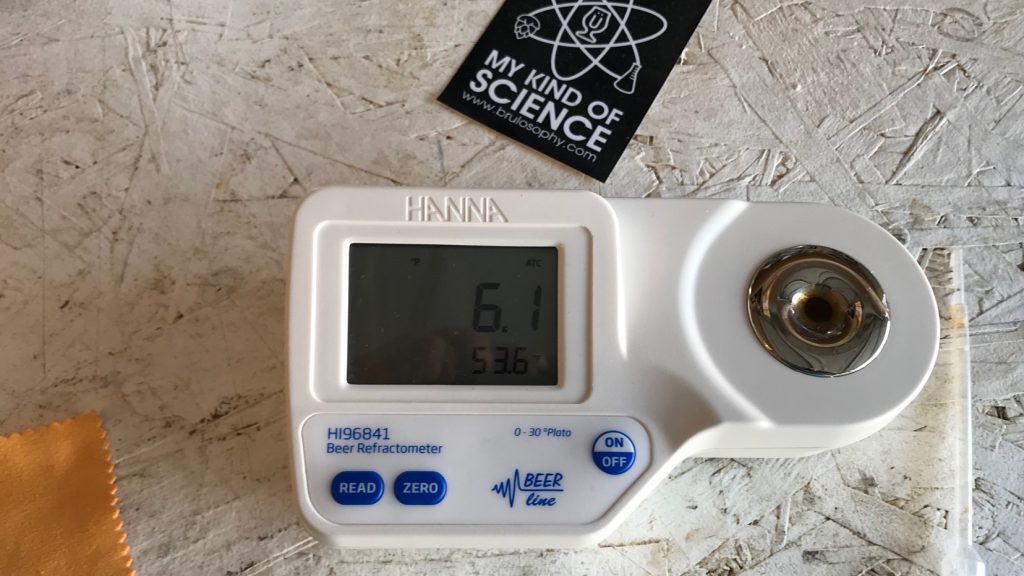
Rather than waiting for the wort to chill like I normally do, I pitched a single pack of Imperial Yeast A09 Pub into the 72°F/22°C wort.
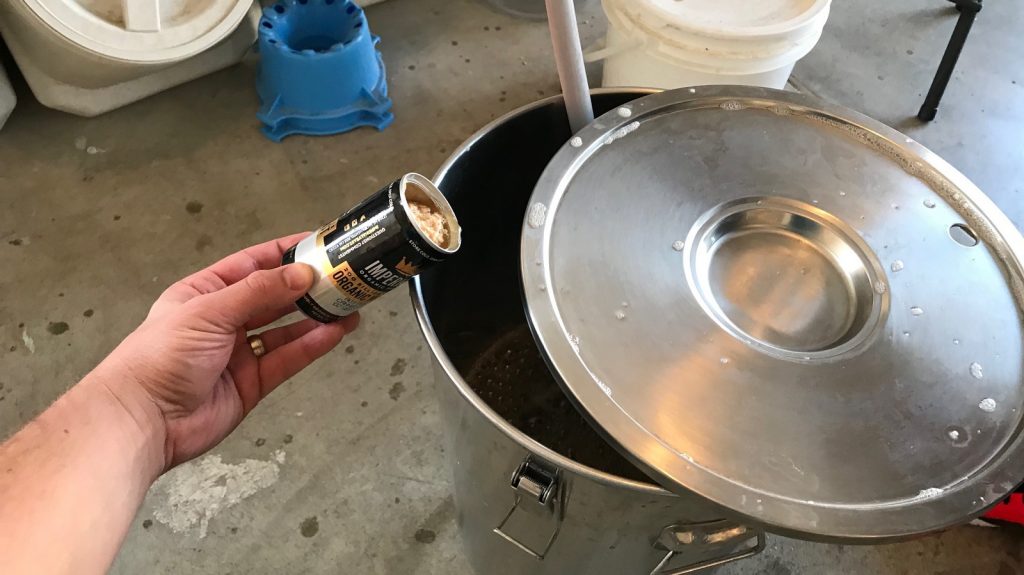
The beer filled Brew Bucket was then placed in my chamber and left to ferment.
This batch took all of 35 minutes on top of the IPA to make, not too shabby for what I expected to be decently drinkable Irish Stout. I noticed airlock activity just 6 hours later then ignored the beer for 2 weeks before checking to ensure FG had been reached.
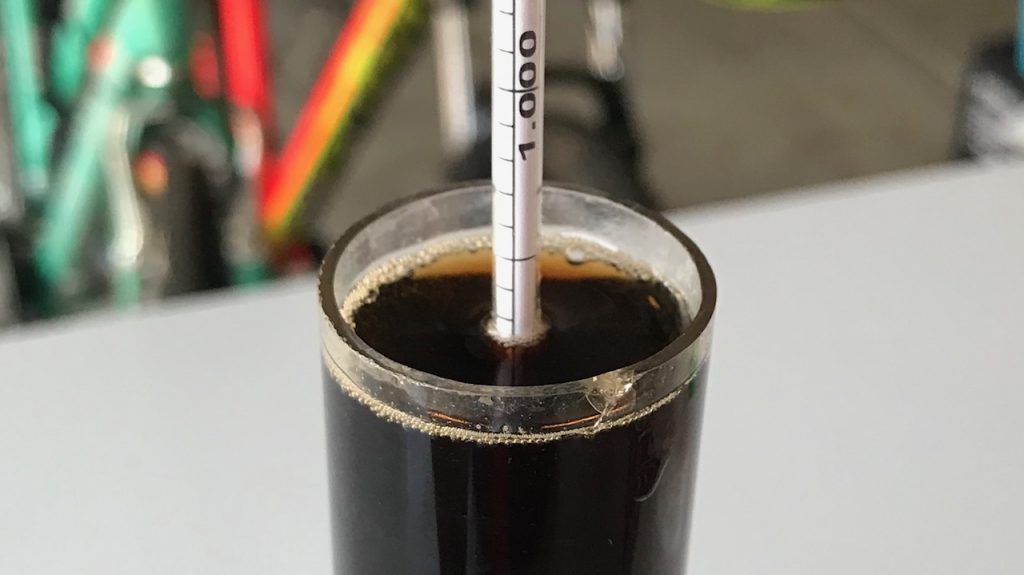
Rather than cold crashing, I immediately racked the beer to a sanitized keg.
The full keg was placed in my keezer and burst carbonated for 22 hours at 35 psi, after which I reduced the gas to serving pressure and let it condition another week before serving it to blind participants. I was pleased with the carbonation and clarity of this dark ale.
| METHOD |
Participants, all blind to the brewing methods used, were served samples of the beer in standard clear taster glasses then asked to focus on its appearance, aroma, flavor, and mouthfeel. Each participant completed a brief survey in a relatively quiet setting after being instructed not to interact with others while evaluating the beer.
| RESULTS |
A total of 15 people of various levels of experience participated in this Short & Shoddy evaluation. Participants were first asked to write-in the style they believed the beer to be based on their perception.
Tasters were then instructed to rate how hoppy, malty, and dry they perceived the beer to be on a 0-5 scale where a rating of 0 indicated “not at all” and 5 indicated “extremely;” these ratings were then averaged.
Tasters were provided a list of common hop, malt, and yeast characteristics then instructed to select from each the one they perceived as being strongest in the beer.
Hop Characteristics
Malt Characteristics
Yeast Characteristics
Next, participants were asked to indicate whether or not they detected any off-flavors in the beer; those who did were provided a list of common off-flavors and instructed to select the one they perceived as being strongest. Out of the 15 participants, 2 people reported perceiving a metallic character and another person reported astringent.
Tasters were then asked to rate how much they enjoyed the beer on a 0-5 scale where 0 indicated they hated it and 5 indicated they loved it.
Finally, the beer style was revealed to participants and they were asked to rate how representative it was on a 0-5 scale where 0 meant “not at all” and 5 meant “extremely.”
My Impressions: Dayum! This Irish Stout definitely didn’t drink like a sub-3% ABV beer, except for the fact I could crush pint after pint without getting blitzed. While I certainly perceived it as being dry, it had a surprisingly moderate body that I felt really held the roasty malt and earthy hop flavors up. More like a Beamish than a Guinness, to my palate, this beer was right inline with what I expect from an easy-drinking Irish Stout, though there’s just something about a slightly higher ABV that I missed.
| CONCLUSION |
Having never done a parti-gyle, I had no clue what to expect from this Irish Stout made using spent grains from a batch of IPA. My biggest concern was not extracting enough sugar from the grains to reach a respectable OG, which I feared would leave me with a thin, pallid beer. Indeed, the OG clocked in quite a bit lower than I would have liked, despite the addition of 3 lbs/1.4 kg of additional grain. Regardless, tasters seemed none-the-wiser and not only tended to think it was fairly representative of the target style, but most enjoyed the beer as well.
Subtracting the 2 hours I spent brewing the initial American IPA, this Irish Stout took me right around 35 minutes to make. Using an abbreviated 20 minute boil and underpitching into warm wort “should’ve” resulted in perceptible DMS with perhaps some yeast derived off-flavors, neither of which were noted by participants nor perceive by me. While I didn’t pick up any particular metallic off-flavor, I can see how the dryness of the beer might leave some with that impression. Finally, substituting flaked oats for flaked barley didn’t appear to have all that huge of an impact based on my experience with other versions of Irish Stout, which makes me all the more curious to compare them in a future xBmt.
Ultimately, I was quite pleased with this beer and absolutely plan to use spent grains from one batch to produce smaller table beers. However, in future batches, rather than rolling with a lower than expected OG, I’ll probably add a bump of DME to the wort just to bring it up to where I want it to be. Or, given how quickly base malts seem to convert, perhaps I’ll try adding a good portion of something characterful like Munich or Vienna to increase the amount of fermentables. Another thought I had is use the second volume of low OG wort for a quick turnaround Berliner Weisse. So many options!
If you have thoughts about this Short & Shoddy brew, please feel free to share in the comments section below!
Support Brülosophy In Style!
All designs are available in various colors and sizes on Amazon!
Follow Brülosophy on:
FACEBOOK | TWITTER | INSTAGRAM
If you enjoy this stuff and feel compelled to support Brulosophy.com, please check out the Support Us page for details on how you can very easily do so. Thanks!

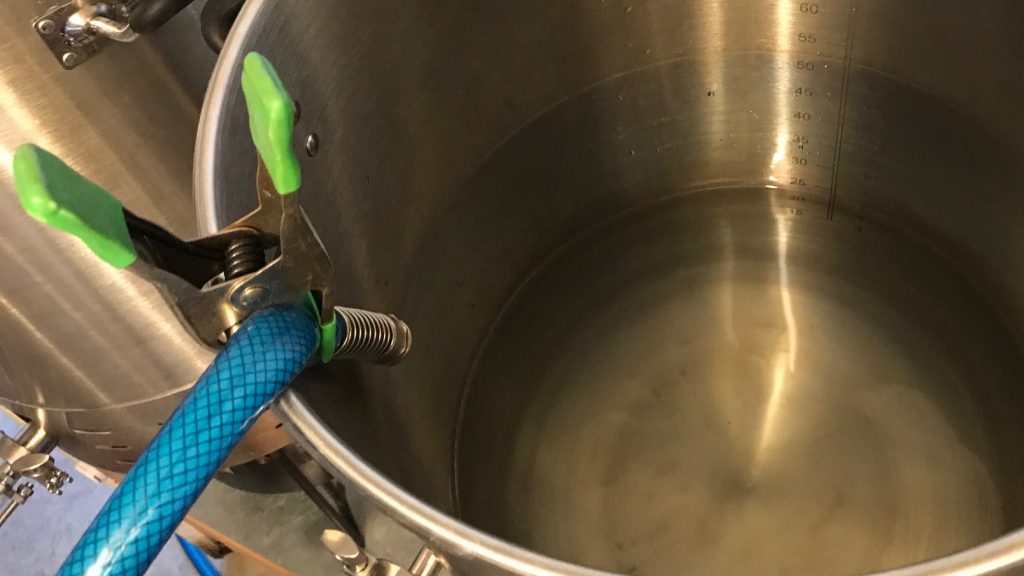
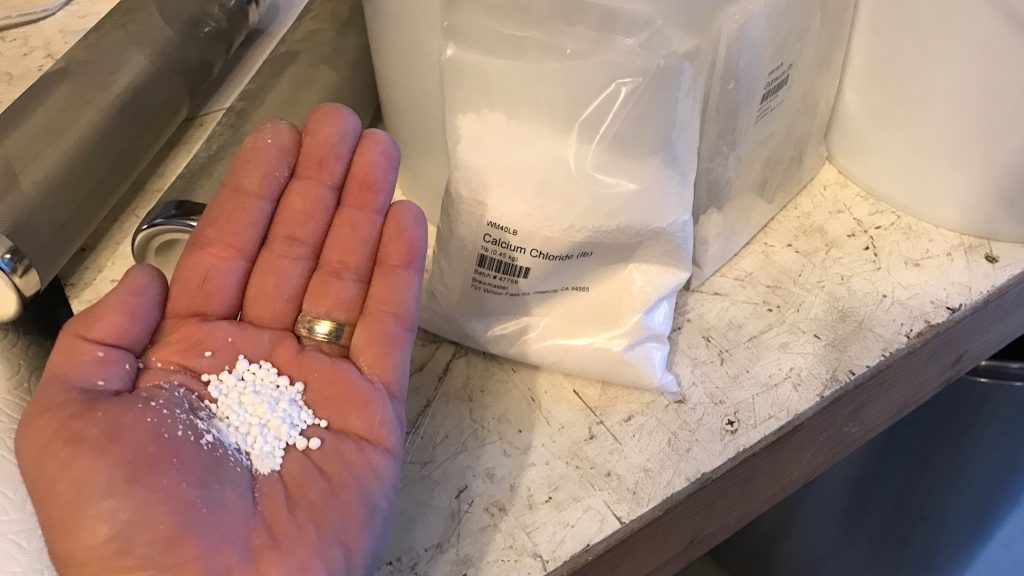
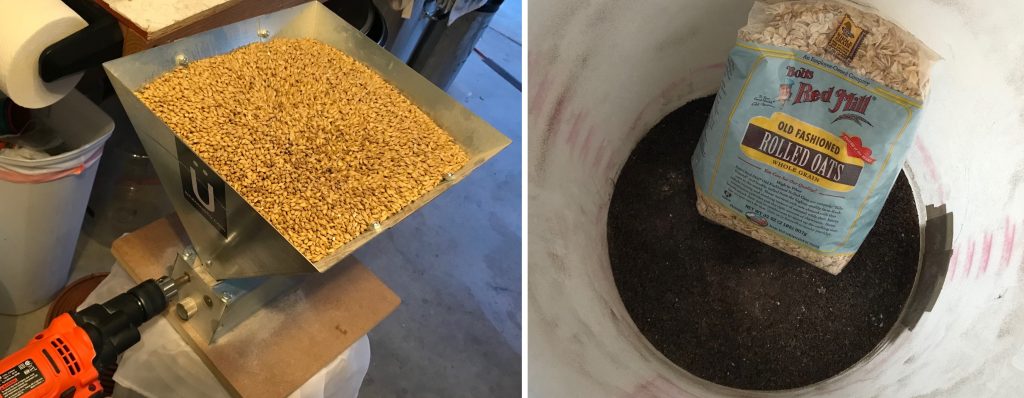
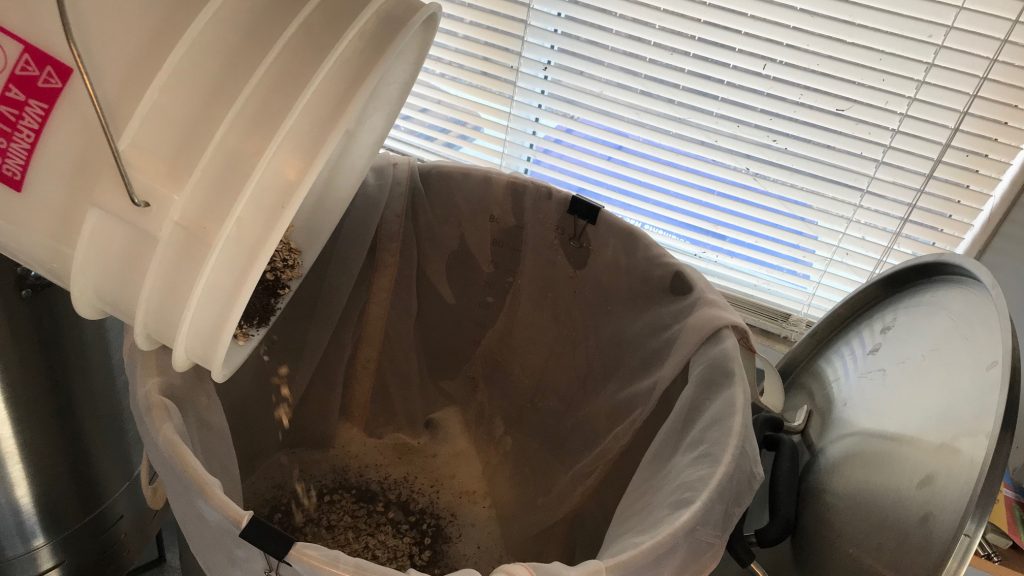

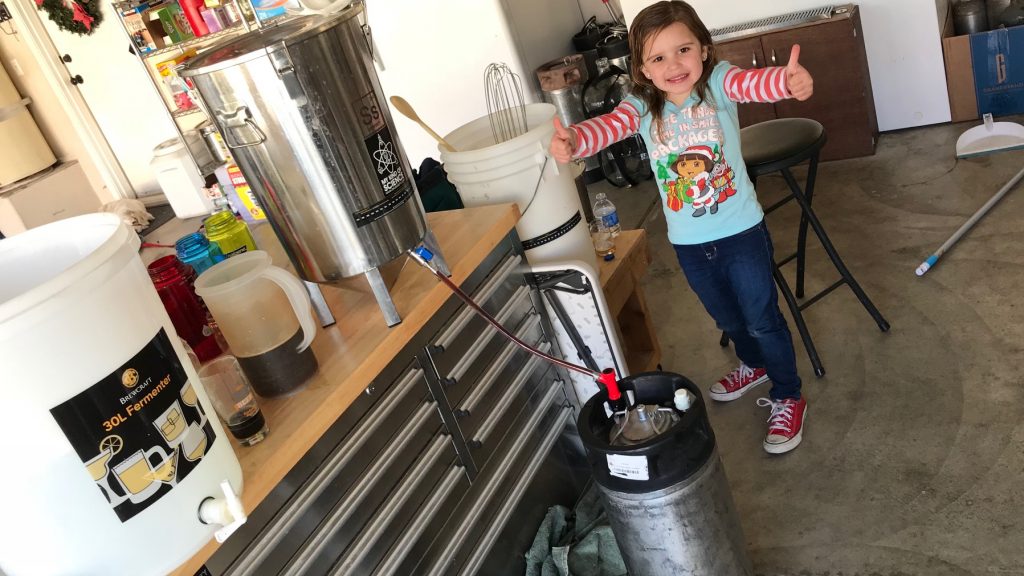
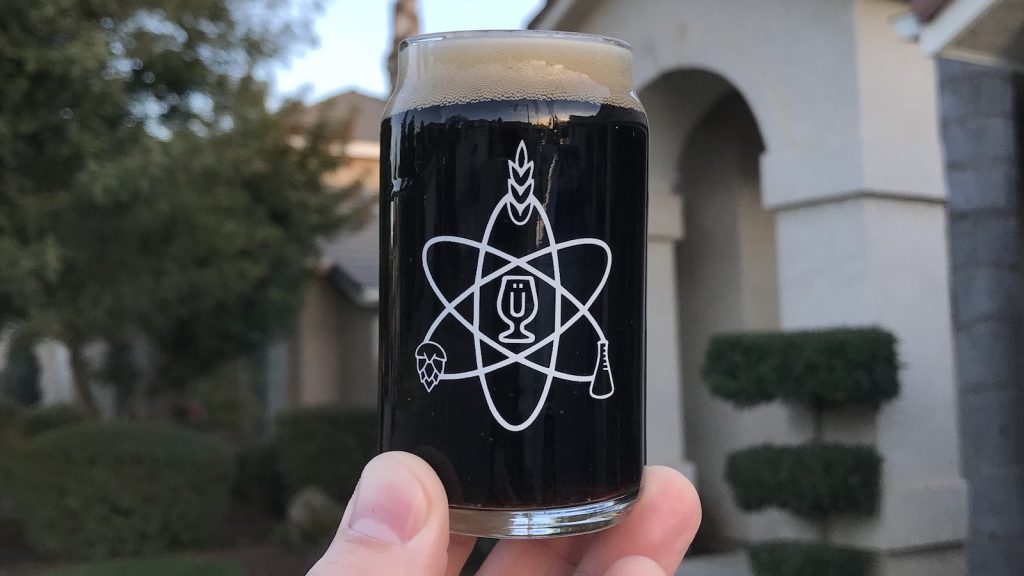
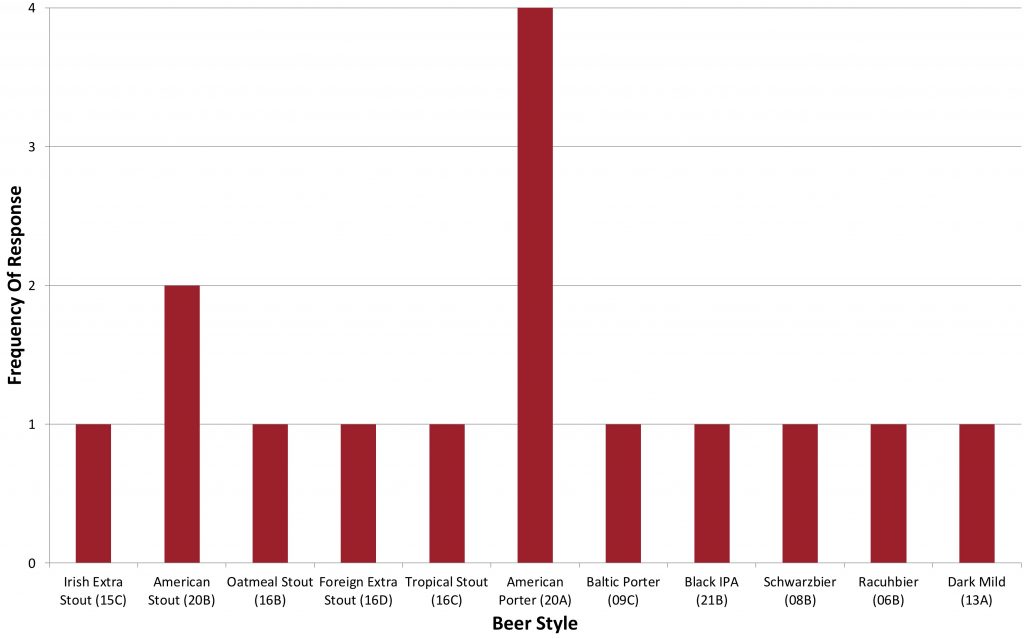
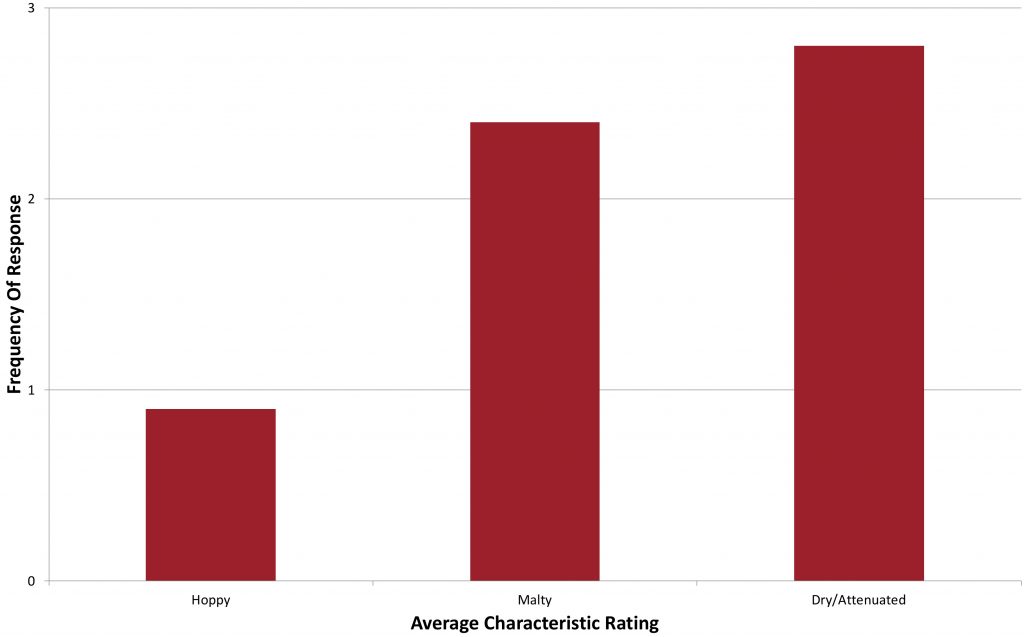

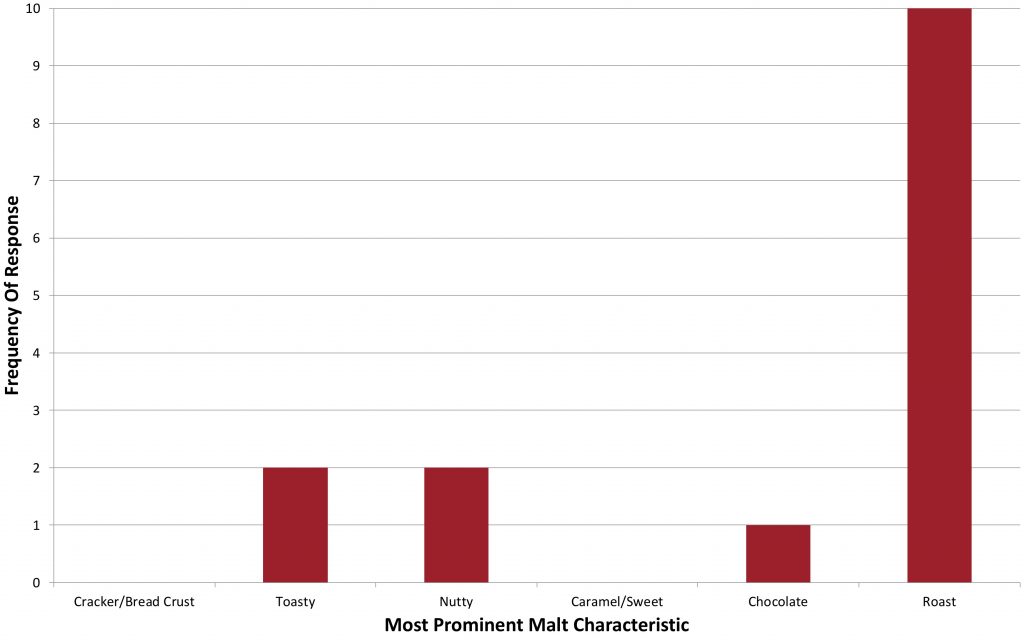

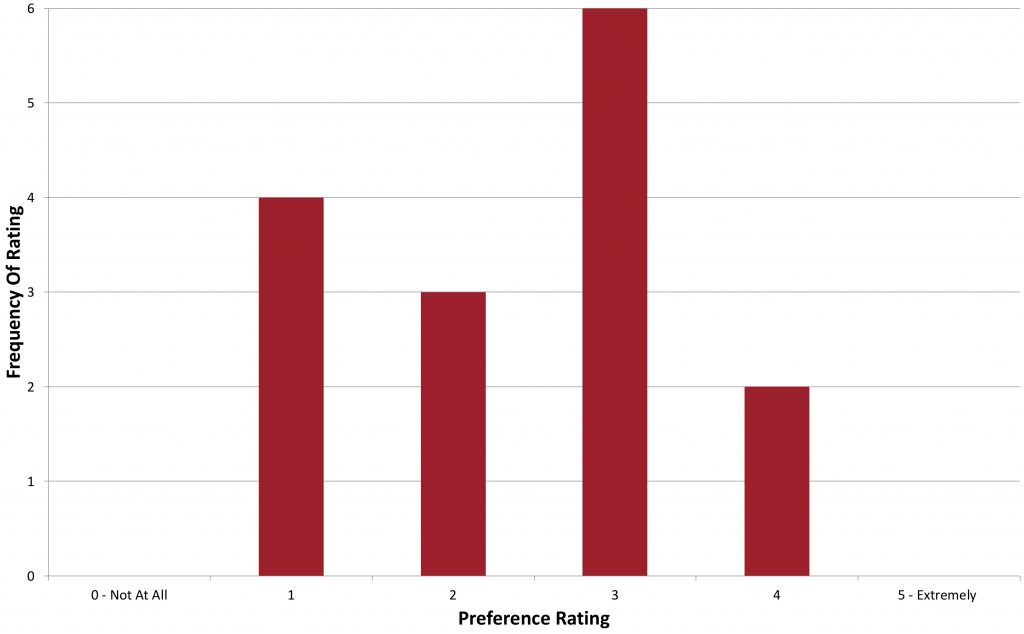
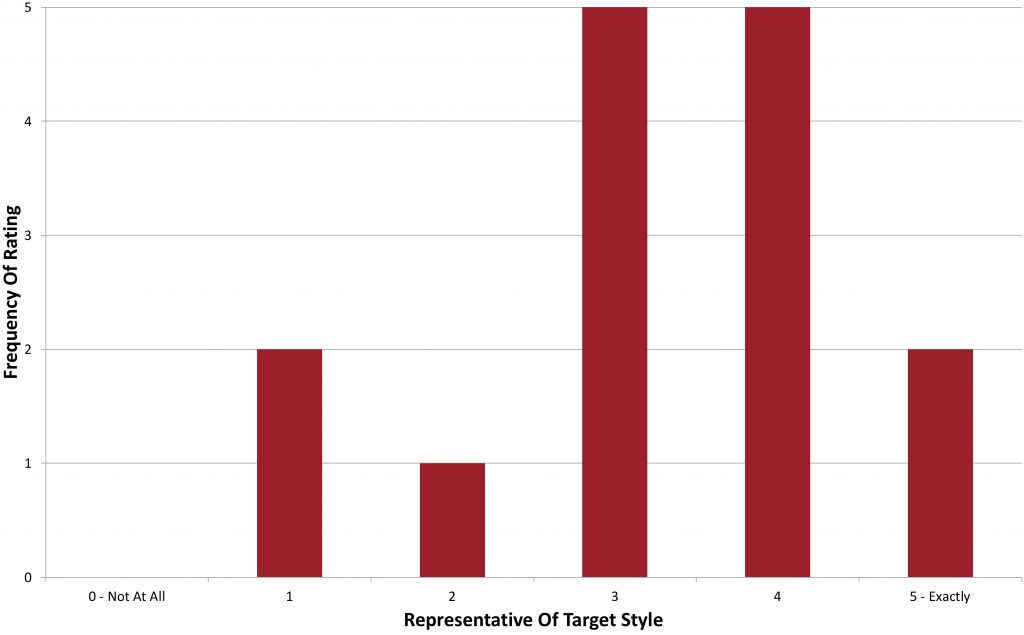










19 thoughts on “Short & Shoddy | Irish Stout”
It seems to me that some of the choices for what constitutes ‘short and shoddy’ are maybe not so in line with what a lazy/inept homebrewer might do. I have a hard time believing that someone who cared enough to do water adjustments wouldn’t bother to measure their additions, even volumetrically with tablespoons or something. Not that I imagine you’d want to keep extra, crappy equipment around, but it might also behoove you to use an analog thermometer rather than a ThermaPen – I got one in my first homebrew kit and used it for probably a year before I broke it and decided to upgrade.
Not trying to be aimlessly critical here! I just think that Short and Shoddy ought to help people think about their technique, and I think focusing on more believable missteps would be beneficial. I’m grateful for all of the info you guys post here, it has definitely helped demystify a lot of questions that have come up in my own brewing!
Or no thermometer at all!
Yes!
i think the analog thermometer would actually take longer to read than the digital one though 🙂
How do you calculate the original gravity you get from your spent grain?
Experience. I don’t know of any calculators out there that predict such a thing. But I would ask others who do parti-gyle what efficiency they get from their first and second mashes and plan accordingly. But my instincts say that if you get 70% efficiency from your first mash you can only get at most 30% from your second, so maybe plan for 20% and call it square?
I do this all the time. If you type partigyle calculator into google, you will find a calculator. I find that a no sparge BIAB that has a pre boil of about 1.055… will produce a 2nd runnings of about 1.025. Not too bad. I often add additional base malt, and or roasted grains to my 2nd runnings batch. As long as you are going from a Light colored beer to a darker beer… there is no problem. Here is a tip from experience… Bag your adjunct grains separately in the 1st runnings batch. I use polyester paint strainer bags. Example: I make my house lager (cornball) with 30% corn. But I don’t want the corn to continue to steep in the 2nd runnings batch. By bagging it separately I can easily remove it. Partigyle is also a great place to screw around with decoctions. You will get a couple of extra points of gravity and you don’t have to do the complicated rest of a normal decoction. The possibilities are endless. If the gravity is a little low… you can add some DME or some Sugar. The second running of “cornball” have become session IPA (pliny the toddler) many times. They have also become pale ales, stouts, and even schwarzbier. The second runnings of Smaug (dragons milk clone) have become a Northern English Brown ale many times.
I’m going to try that this June. Gracias!
My first runnings average 45% efficiency while my second runnings average 20% efficiency. I always use 2qt/lb mash thickness and then add an equal amount of sparge water in a batch sparge approach; I drain the grain bed entirely without mashing out and then add sparge water at 170F to hit the mid to high 150F range as I will typically add other grains that may need to convert, stirring often and recirculating for up to 30 minutes before drawing off second runnings.
In practice, grain type and full volume OG (being OG based on your normal mash/sparge brewhouse efficiency with all grains that will be used) really have an impact. For me, protein dense grains (wheat, rye, and spelt) have given worse efficiency, usually 40%/15%. If my full volume OG goes above 1.090 then I will also lose efficiency on each set of runnings, closer to 40%/15% again. With all barley mashes and moderate (1.070ish) full volume OG, I can hit 55%/35% efficiencies. I do blend the worts often, add top off water, and keep Belgian candi sugar on hand to dial in gravities.
For zeph,
I’ll be the first to admit that is is how I brew like every other batch. With a young family and two jobs, I have taken to basically coming up with a recipe in my head and doing a 20/20 boil/mash. Beersmith mobile on my phone calculates ibu’s and if I’m feeling frisky I’ll throw a bit of gypsum and lactic in based on zero math and just experience. Temps and OG calcs are little more than an estimate, and a luxery at that!
I know it’s not right and I feel “dirty” when I do it.. but the beer is always good enough and it only takes me about an hour and a half start to finish. Admittedly I will from time to time go full bore into a 4-5 hour Brew day and pull out the bells and whistles… But these short and shoddy exbeeriments have encouraged me to push the limits of what “good” brewing is and have kept me in the hobby. Just food for thought!
The more of these you do, the more I’m convinced you’re some kind of witch.
Nah, brewing is shrouded in dogma that I’m starting to accept is largely based on old ingredients and technology. I hear from people almost daily who are making beers like this that win awards 🍻
Sounds like something a witch would say…
Thanks for the continued exBEERiments – my brew partner and I have learned (and unlearned) so much by following them.
Regarding the potential for a lower-than-expected (or desired) OG on the runnings for a parti-gyle batch, could one use some DME to bump a few points without too negatively affecting a style such as this?
Here here for Short/Shoddy! Doing the IPA soon and kickin in a mixed berry hard cider this weekend. Travel all week for work… family. Weekends are real tight. This series has been my nirvana. I might even try this stout on top of the IPA. But have a BBA porter in my corny now that gets started tonight! Thanks Marshall and team.
Any ideas for or against a Short & Shoddy wheat beer? Would wheat be a problem with the quick mash and boil?
I am looking to brew a quick all-grain demonstration for Session Beer Day and am thinking about making something my wife really likes (apricot wheat).
Haven’t done one yet, but I don’t see why it wouldn’t work. Maybe test mash conversion with iodine before running off?
Absolutely got me intrigued as to brewing up a parti-gyle brew! I brew on a Robobrew, how would this be achieved within the limitations of the Robobrew? Although it can still create a rather robust beer, There are limitations as to how much grain can be used in this all-in-one. DO you think the same type of results can be generated?
Thanks for fabulous listening adventure!
I honestly have no clue, as I’ve never brewed on a Robobrew. The initial grainbill, though, is quite packed, so it could be difficult. Either way, maybe do a 4 gallon batch for the first gyle?